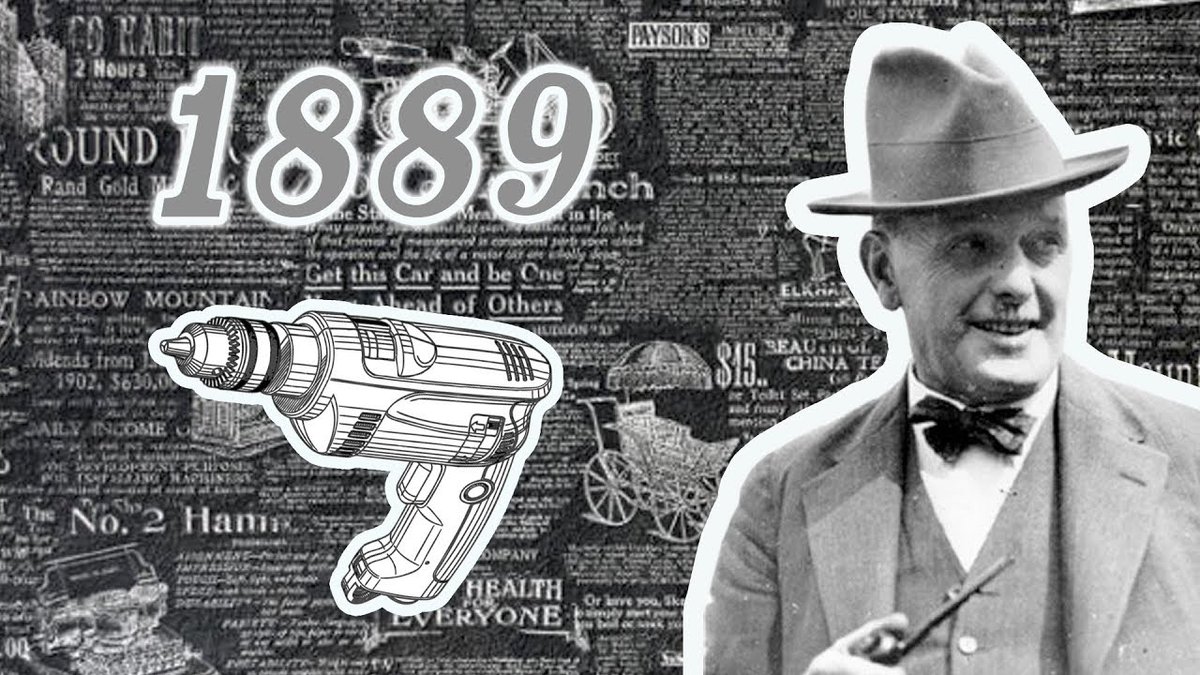One of the fathers of power tools: Who is Arthur James Arnot?
Scottish engineer was born on 26 August 1865 in Hamilton. He attended West Scotland Technical College in Glasgow, from where he moved to London to gain experience in electrical engineering, the subject that interested him most.

Sebastian Ziani, who in London developed high-voltage alternating current transmission technology in competition with, for example, Thomas Edison, who promoted direct current technology, also became Ferranti's assistant. This collaboration turned out to be vital to the Scottish engineer's career, yet in 1889 he was offered to go to Melbourne and carry out the project to build a power station for Union Electric Co.
Arthur Arnot developed and patented his electric drill after arriving in Australia. Originally this invention was designed for mining applications and was used for cutting stone, but it should be noted that it was one of the first power tools to be patented. A few years later this idea was further developed by the Fein brothers from Stuttgart, who introduced portable drills that were still far from the tools we know today. These drills were developed at the Black & Decker factory in the USA in the 1920s. The drill handle we know, which is comfortable and easy to use, appeared there.
Arthur James Arnot (26 August 1865 – 15 October 1946) was a Scottish electrical engineer and inventor, best known for patenting the world's first electric drill. He later designed the Spencer Street Power Station.
But back to Arthur Arnot, whose career has just begun. His determination and diligence were appreciated and he was tasked with developing a street lighting system and overhead line in Melbourne. He was also appointed to the city council but left that position in 1901 to take charge of the Australian branch of Babcock & Wilcox Ltd with great success. In the following years, Arnot made major investments in several cities in New Zealand. In 1914 our engineer volunteered in the First World War but was not sent to the front. Instead, he served in the engineering forces, including the Artillery Division.
After the war, Arnot became infamous in a corruption scandal involving the construction of a power station. He admitted that a Sydney city councilman had sought a bribe in exchange for helping him sign a contract. Arnot, who participated in the negotiations, escaped punishment, but Babcock & Wilcox Ltd had to pay a heavy fine. A year later, Arnot retired to devote himself to his passions, such as running an orchard, fishing, and playing golf.
Today, electrical hand tools are indispensable in workshops, factories, carpentry shops, and construction sites. Today, modern construction work cannot be imagined without electric or pneumatic drills, screwdrivers, saws, and related equipment. Their development required the manufacture of special drills and knives that could operate at high speeds and machine increasingly hard materials. Cordless tools, which have become widespread thanks to the development of lithium-ion batteries, have brought even more convenience.
Today, equipping a drill (a tool known for millennia) with an electric motor may not seem like a major innovation. But you might ask yourself: is this a pertinent question, given the fact that one of the most popular and important technical innovations is the electric car?
